#slave records
Explore tagged Tumblr posts
Text

The cottonfields of Georgia were once worked by the enslaved. REUTERS/Tom Lasseter
WASHINGTON
We sat in the pews of a Methodist church last summer, my family and I, heads bowed as the pastor began with a prayer. Grant us grace, she said, to “make no peace with oppression.”
Our church programs noted the date: June 19, or Juneteenth, the day on the federal calendar that celebrates the emancipation of Black Americans from slavery. The morning prayer was a cue.
The kids were ushered from the sanctuary to Sunday school. My sons – one 11, the other 8 at the time – shuffled off to lessons meant for younger ears.
The sermon, delivered by a white pastor to an almost entirely white congregation, was headed toward this country’s hardest history.
“We are a nation birthed in a moment that allowed some people to stand over others,” she said from the pulpit, light flooding through the stained glass behind her. “We’ve all been a part of taking what we wanted. White people, my community, my legacy, my heritage, has this history of taking land that did not belong to us and then forcing people to work that land that would never belong to them.”
The pastor did not know that I was months into a reporting project for Reuters about the legacy of slavery in America. It was an idea that came to me in June 2020, shortly after returning to the United States after almost two decades abroad as a foreign correspondent.
We had moved to Washington just 18 days after George Floyd was killed by a white police officer in Minneapolis, and in our first weeks back, I found myself drawn to the steady TV coverage of protests from coast to coast. I read about the dismantling of Confederate statues on public land – almost a hundred were taken down in 2020 alone. I thought about my own childhood, about growing up in Georgia. And I wondered: Had this country, which I had yet to introduce to my sons, ever truly reckoned with its history of slavery?
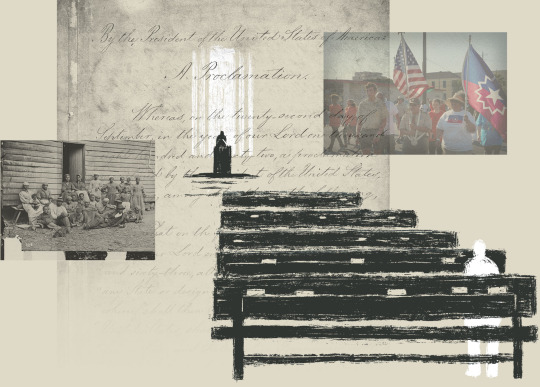
REUTERS/Photo illustration REUTERS/Photo illustration
I wondered, too, about our most powerful political leaders. How many had ancestors who enslaved people? Did they even know? I discussed the idea with my editors, who greenlighted a sweeping examination of the political elite’s ancestral ties to slavery. They also raised another question: What might uncovering that part of their family history mean to today’s leaders as they help shape America’s future?
A group of Reuters journalists began tracing the lineages of members of Congress, governors, Supreme Court justices and presidents – a complicated exercise in genealogical research that, given the combustibility of the topic, left no room for error.
Henry Louis Gates Jr, a professor at Harvard University who hosts the popular television genealogy show Finding Your Roots, told me that our effort would be “doing a great service for these individuals.”
“You have to start with the fact that most haven’t done genealogical research, so they honestly don’t know” their own family’s history, Gates said. “And what the service you’re providing is: Here are the facts. Now, how do you feel about those facts?”
And there was more to the project, something I needed to do, if only out of fairness. As a native of Mississippi who grew up in Georgia, I would examine my own family’s history. A passing remark made by my grandfather long ago gave me reason to believe my experience wouldn’t be as joyous as the advertisements I saw for online genealogy websites. Instead of finding serendipitous connections to faraway lands, I suspected I would find slavery on the red clay of Georgia.
But all of that was for work. It wasn’t for Sunday church, I thought, sitting next to my wife. My mind wandering, I looked down at the Rolex on my wrist.
This is the story that I tell myself: Those are things that I earned, paid for with hard work. I am a high school dropout. My mother is a high school dropout. My father is a high school dropout. My sister is a high school dropout. My first home was in a southern Mississippi trailer park. My mother was pregnant with me at the age of 19. My dad left our lives early.
I got my GED. I moved from a community college to the University of Georgia, working as a short-order cook while earning a bachelor’s degree in journalism.
For me, church is a place that offers a soothing sense of order, of ritual. That morning, I didn’t feel comfortable. I resented the pastor. I was there to listen to the choir and contemplate a Bible verse or two, not to be lectured. Especially about a subject I was grappling with personally and professionally.
“We would swear with our last breath that we do not have a racist bone in our bodies,” she continued. “But some of us were born in a lineage of people who take land that is not ours and enslave other people.”
Her words would come close to the facts that my reporting surfaced in the months ahead. Still, on this Juneteenth, I was done listening.
After the service, I walked to the car with my wife and sons. I didn’t talk with them about the sermon as we headed to our home on the outskirts of Washington. Ours is a street of rolling green lawns and shiny Cadillac Escalades. On the edge of the U.S. capital, a city where some 45% of the population is Black, the suburb where we live is about 7% Black. It was an inviting place for a white man to escape the pastor’s message.
That cocoon soon started to unravel. I had begun a journey that would take me back to places I held dear but had not truly known. What I would come to learn in researching my ancestors didn’t tarnish my love for family. At times, though, I did worry that I was betraying them.
It also left me with two questions I have yet to answer. What do I tell my sons about what I found, and what does it say about their country?
Introducing America
Throughout 2022, our reporting team assembled family trees for Congressional members. We connected one generation to the previous, like puzzle pieces snapping one to another, extending years before the end of the U.S. Civil War in 1865. We learned to decipher census documents written in sometimes bewildering cursive. Enlisting the help of board-certified genealogists, we became comfortable with the types of inconsistencies that surface in the old papers: names slightly misspelled, ages off by a few years, children who disappear from households as they die between censuses or marry young.
For months, my attention was drawn to the complexity of the task, and I scoured websites for documents that went beyond census records: certificates of birth, death and marriage, obituaries, military service forms, family Bibles.
The work was painstaking, and a welcome diversion. Each time I thought about building out my own family history, I winced at the subject coming close. Those were my people, my history.
Eventually, I knew I had to get started.
My wife and I were born in America. Both of us are journalists. We met in Baghdad, there to cover the war in Iraq. We married later while living in Russia, had our first son in China, our next in India. After two years in Singapore, we decided it was time to take the boys home to America, a land they’d visited on summer trips to their grandmothers’ houses in Georgia and Virginia but hardly knew.
Their introduction began less than three weeks after the May 25 death of George Floyd, as soon as we rode in from the airport. As we approached shuttered stores and boarded-up windows in downtown Washington, our younger son looked at the graffiti and banners and asked what the letters BLM stood for. My wife and I spelled it out – Black Lives Matter – and told him about Floyd’s death. Six at the time, he had no idea what we were talking about. His older brother explained the protests were to help Black people. Then he reminded him that their uncle, my sister’s husband, is Black. Our little boy went quiet. In the wake of George Floyd’s killing, protesters took to the streets across America.
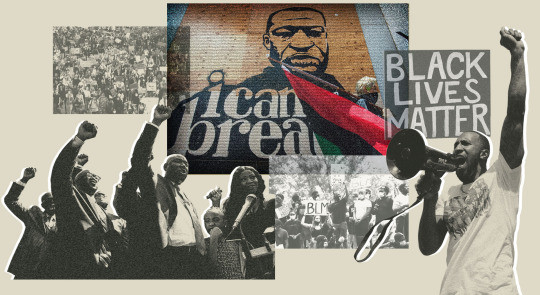
REUTERS/Photo illustration In the wake of George Floyd’s killing, protesters took to the streets across America. REUTERS/Photo illustration
Last spring I began to trace my family’s lineage in detail. I had gone through this process for dozens of members of Congress. Now I was looking at my own mom. As I started a family tree, I did not like typing her name – it felt like I was crossing a line. I opened the search page at Ancestry.com and entered the names of her parents, Harriet and Brice.
Brice was 69 or so when he visited us in Atlanta during the summer of 1994. I was a teenager. Joseph Brice James was my grandfather, but we just called him Brice. Like my own father, he hadn’t been part of our life. He lived in Chicago and had worked as a traveling salesman. The trip may have been one last effort by him to connect. He wasn’t well and would die about eight years later.
It would be that visit – really, just one line that Brice muttered – that came back to me in the summer of 2020 and started my own personal reckoning.

My Grandfather’s Words Joseph Brice James. (Courtesy: Tom Lasseter)
Here’s what I remember: Brice wanted to see the farm where his ancestors, our ancestors, lived. My mother drove, and my sister and I sat in the backseat of our family’s aged Toyota Corolla. The address Brice helped direct us to was about an hour out of Atlanta. My mother had been there before, too, but my ancestors had sold it off, parcel by parcel, starting around 1947. We pulled over in front of a clapboard farmhouse.
I wasn’t sure why we were there, or who might have once lived on the farm. Brice, a gaunt figure with closely cropped hair and large glasses, didn’t volunteer much. I walked alongside him in silence, across a field spotted with pine trees, on the edge of a lake. Then Brice paused, flicking his wrist toward an old well and said: “The slaves built that.” A moment passed and he kept walking, offering nothing further.
Those four words stayed with me, though, in the way that happens with some white families from the South: I now knew, if I wanted to, that somewhere in my history there was a connection to slavery. The farmhouse in Georgia, once owned by the ancestors of Reuters journalist Tom Lasseter.
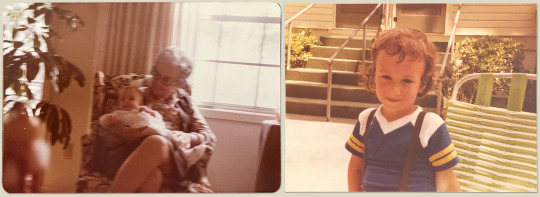
REUTERS/Tom Lasseter
Where to begin? Before prying into Brice’s side, I decided to look somewhere more familiar. The census shows my mother’s maternal grandmother as Cornelia Benson. I grew up calling her Grandma Horseyfeather, a nickname given her by my mother’s generation, the product of a long-ago children’s tale.
Looking at the 1940 census, there was Cornelia Benson of Brooks County, Georgia. I knew Brooks County as a place of Spanish moss, where we caught turtles and lizards in my childhood. I loved Thanksgiving at 618 North Madison Street, where a dirt driveway led to the back stairs and then a kitchen with long rows of casseroles. Grandma Horseyfeather, born in 1898, spoke in a slow, deep drawl. She wore lace to church. I adored her and I adored Brooks County.
At home in Atlanta, I felt lost at times, my single, working-class mom stretching one paycheck to the next. But in Cornelia Benson’s house, I felt at ease. My identity was simple: I was a white kid descended from generations of white people from the deepest of south Georgia.
As a child, I did not ask what it meant to belong to a place like Brooks County. Now I wanted to know. Cornelia Benson with Tom Lasseter as infant (left); Tom Lasseter during a childhood visit to Quitman, Georgia. (Courtesy: Tom Lasseter)
A story came to mind. I was young, and the grownups were visiting at the dining table. Someone started to tell a story about life in Quitman, the town in Brooks County where Grandma Horseyfeather lived. It was about the Ku Klux Klan and its marches.
The Klan would saunter down the street, wearing hoods and sheets, thinking no one knew who they were. The story’s punchline: All the “colored boys” – meaning Black men – knew who was wearing those sheets. They could see the shoes the white men were wearing. And who do you think shined those shoes?
I remember a tittering of laughter ripple around the table.
It was a vignette I sometimes trotted out when discussing the South. I’d shake my head and show a rueful half-frown that communicated disapproval, but not too much. My Brooks County relatives didn’t quite fit the pastor’s words. I knew they had some racist bones in their body. Still, these were my people. They didn’t mean any harm.
Reading back over the story after I wrote it down last year made me wonder what I didn’t know. So I did something that had never before occurred to me: I looked up the history of Brooks County, Georgia. It did not lead anywhere good.
In 1918, at least 13 Black people were killed in a rash of lynchings by mobs in Brooks that cemented its reputation for bloodshed. A flag that hung from the NAACP national headquarters in New York City, 1920-1928 (Source: NAACP via Library of Congress). Lynchings in Brooks County, Georgia, in the early 20th century cemented its reputation for racism and bloodshed.

REUTERS/Photo illustration
“There were more lynchings in Brooks than any county in Georgia” at the time, according to a 2006 paper examining lynchings in southern Georgia. Among the 1918 victims: Near the county line, a pregnant woman was tied to a tree and doused with gasoline before her belly was slit open with a knife and her unborn child tumbled to the dirt. The woman was shot hundreds of times, “until she was barely recognizable as a human being.” And then both her and her fetus’ burial spots were marked by a whiskey bottle with a cigar placed in its neck, according to the paper – “Killing Them by the Wholesale: A Lynching Rampage in South Georgia” – published in The Georgia Historical Quarterly.
I toggled my Internet browser to census records. Cornelia Benson and her husband weren’t yet living in Brooks County as of the 1920 census. They moved there between 1920 and 1930. I felt relieved, clean. I didn’t know any of that history. No one had told me.
But the more I learned, the more I played out the possibilities, the more troubled I felt about the Ku Klux Klan anecdote.
One morning in my home office, I pulled out a cell phone to record my thoughts about those memories. As I did, I heard the wood floorboards creaking. It was one of my sons walking outside the room. I waited for him to go downstairs before starting. When I later listened to my recounting of the Ku Klux Klan story, I noticed I’d used the phrase “Black people” rather than “Colored boys.” Without thinking, I’d cleaned the story up around the edges, making it easier to tell.
‘Mules, Oxen…and The Following Negroes’
Brice died in 2001. I never learned anything else from him about that well on the property our ancestors owned. Having read through the Brooks County material, it was time to see what I might find out about Brice’s side of my family.
I knew my grandfather was born in Canada, but that his side of the family was somehow connected to that land in Georgia. Using Ancestry.com, I found a 1948 border crossing document for him, with the names of his father and mother. I took those names and found his parents’ 1921 marriage license in Fergus County, Montana.
I noticed that his mother’s maiden name was Lila M. Brice, and that her parents were Ethel Julian and Joseph T. Brice. I looked for Ethel Brice. There she was, in the 1910 census. She was living with her daughter Lila in Forsyth County, Georgia, after a divorce – back in the household of her father, a man whose name I had never before heard: Abijah Julian.
The trip to the farm house in 1994 was in Forsyth County. The old clapboard house was built in the 1800s. And the well that Brice mentioned, the one that he said enslaved people built, sat right next to the house.
From one census to the next, I followed Abijah, a name from the Old Testament.
Information about the Julian family wasn’t hard to find once I started looking.
Working my way backwards, I learned Abijah Julian died in 1921. His passing was marked in The Gainesville News by an item headlined “DEATH OF SOLDIER STATESMAN.” Placed high in the article was the fact that Abijah Julian was part of a Confederate cavalry general’s staff during the Civil War, and that in his later years he “had been a prominent figure at all the reunions of the Confederate veterans.” The piece ended with these words: “Mr. Julian was laid to rest shrouded in the Confederate uniform which he loved.” Abijah Julian, seated, was buried in a Confederate uniform. In an account by his wife, Minnie Julian, she described him returning from war “broken in health and spirit. Negroes free, stock stolen and money – Confederate – valueless.” (Sources: Historical Society of Cumming/Forsyth County, Georgia. Newspaper clipping: The Gainesville News, June 1921)
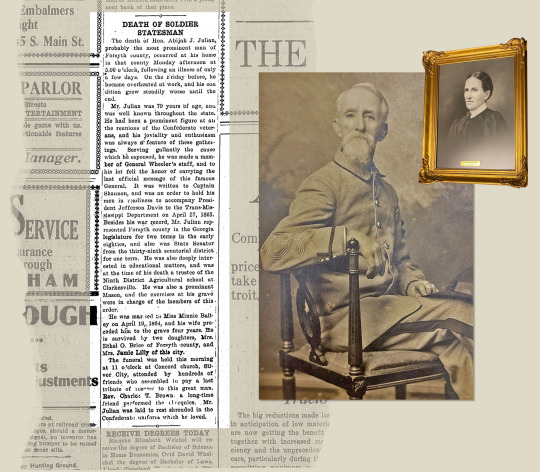
He had served in Georgia’s state legislature for three terms. I looked for more details about him and his ancestors before the Civil War.
Abijah’s father, also a member of the state legislature, died in 1858 at home in Forsyth County, according to press reports. It was just a couple months before Abijah’s 16th birthday.
Some four years later, Abijah went to war against the United States. In 1864, a year before the Civil War ended, he married a woman in Alabama, the daughter of a doctor, who moved to the Julian farm. In an account by his wife, Minnie Julian, she described Abijah returning home after the war, “broken in health and spirit. Negroes free, stock stolen and money – Confederate – valueless.” In the very next sentence, however, she noted they still had 600 acres of land.
Her words signaled that Abijah had enslaved people. But I needed more proof.
In addition to the usual household census forms, in 1850 and 1860 the U.S. government created a second document for the census takers to fill out in counties in states where slavery was legal. It’s referred to as a slave schedule, and it lists by name men and women who enslaved people, under the column “SLAVE OWNERS.” The form gives no names of the human beings they enslaved. Instead, it tabulates what the document refers to as “Slave Inhabitants” only by the person’s age, gender, color (B for Black or M for Mulatto, or mixed race) and whether they were “Deaf & dumb, blind, insane or idiotic.”
After you find a slaveholder on the household census form, matching them to the slave schedule can be complicated. In some counties, multiple men of the same or similar name enslaved people. And of course, not every head of household in a county enslaved people, so fewer names are listed on the slave schedule than on the population census. Fortunately, the households on the two documents are typically listed in the order they were counted by the census-taker – meaning if you see the same residents’ names close by, in the same sequence, you’ve likely found the same person on the two forms.
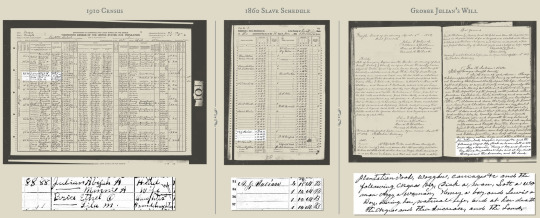
In 1860, on a slave schedule in Forsyth, I found my ancestor listed on line 34 as A.J. Julian. He was 17-years-old at the time. There were four entries for his “Number of Slaves” column – four males, ages from 10 to 18.
There was more. When Abijah’s father, George Julian, died in 1858, he left a will.
One key to unlocking the identities of those who were enslaved is through the estate records of white families who claimed ownership of them. In many cases, wills give the first names of the Black men, women and children bequeathed from one white family member to another.
In his will, George listed property “with which a kind providence has blessed me.” To wife Adaline, George bequeathed “mules, oxen, cattle, hogs and other stock, and plantation tools, wagons, carriages and the following Negros…”
There were five enslaved people left to George’s wife, the will said, with the provision that “the negros and their increase” – that is, their children – would go to Abijah after his mother’s death. George Julian also left four enslaved children to Abijah, himself a teenager at the time.
And, in a separate item, Julian wrote that an enslaved woman and three children should “be sold” to pay his debts.
The will was difficult reading. Lumped in with oxen and kitchen furniture, plantation tools and wagons, were human beings. And “their increase.”
The will listed names of the enslaved kept by the family: Dick, Lott, Aggy, Henry, Lewis, Ellick, Jim, Josiah and Reuben.
The document was dated 1858 – close enough to emancipation that I might have a chance at tracing some of them forward, especially if they used the last name Julian. Perhaps there would be a chance of finding those same names in Forsyth in the 1870 census, when, finally free, Black people were listed by name and household.
Something kept happening, however, when I looked for those names. I’d see likely matches in one or two censuses, and then they disappeared after the 1910 census in Forsyth.
It took me a few minutes of research to figure out why I was losing track of the descendants of the people George Julian enslaved. It was a history drenched with blood, and it drew much closer to mine than I had realized.
The Search for Descendants of The Enslaved
ATLANTA
In 1912, Virginia native Woodrow Wilson became the first Southerner since the U.S. Civil War to be elected president. And the white residents of a county in Georgia, where my ancestors lived, unleashed a campaign of terror that included lynchings and the dynamiting of houses that drove out all but a few dozen of the more than 1,000 Black people who lived there.
The election was covered in the classrooms of the Georgia schools I attended. If the racial cleansing of Forsyth County was mentioned, I didn’t notice.
That history explains the difficulty I had looking for the descendents of the people enslaved by my ancestor Abijah. By 1920, their families and almost every other Black person had fled the county.

From left: The Forsyth County Courthouse in Cumming, pictured in 1907. Built in 1905, it was destroyed by fire in 1973. (via Digital Library of Georgia). The Atlanta Georgian newspaper reports on the lynching of Rob Edwards, September 10, 1912. (Source: Ancestry.com). U.S. President Woodrow Wilson.
They were forcibly expelled under threat of death after residents blamed a group of young Black men for killing an 18-year-old white woman in September 1912. A frenzied mob of white people pulled one of the accused from jail, a man named Rob Edwards, then brutalized his body and dragged his corpse around the town square in the county seat of Cumming. Two of the accused young Black men, both teenagers, were tried and convicted in a courtroom. They too died in public spectacle, hanged before a crowd that included thousands of white people.
There were also the night riders, white men on horseback who pulled Black people from their homes, leaving families scrambling and their houses aflame. The violence swept across the county, washing across Black enclaves not far from the farm where my ancestor, Abijah, lived at the time.
In 1910, the U.S. Census showed 1,098 Black people living in Forsyth. Ten years later, the 1920 census counted 30.
‘Night Marauders’
Until last year, I had never heard of this history. I had a dim memory of news reports about white residents in Forsyth attacking participants in a peaceful march for racial equality – not during the tumultuous Civil Rights era but in the 1980s. I watched video clips from an early episode of “The Oprah Show” – a telecast from 1987 when talkshow star Oprah Winfrey went to Forsyth to try to make sense of what was happening there. Some locals in the audience were unrepentant. Footage shows that crowds on the street and a man, to Oprah’s face, were not shy about using racial slurs on national television.
I learned about the 1912 violence in Forsyth after a genealogist who worked with Reuters sent me a note pointing out that my ancestor Abijah Julian appeared in Blood at the Root, a 2016 book that chronicled the bloodshed there. I already knew Abijah had enslaved people and adhered to the “Lost Cause” – the view that the South’s role in the Civil War was just and honorable.
About four months after the terror in Forsyth began, Abijah wrote a letter to the governor of Georgia in February 1913. He was asking for help to quell the chaos unleashed by “night marauders” who had “run off about all of the negroes.” Here’s part of his letter: A letter Abijah Julian wrote to the governor of Georgia.
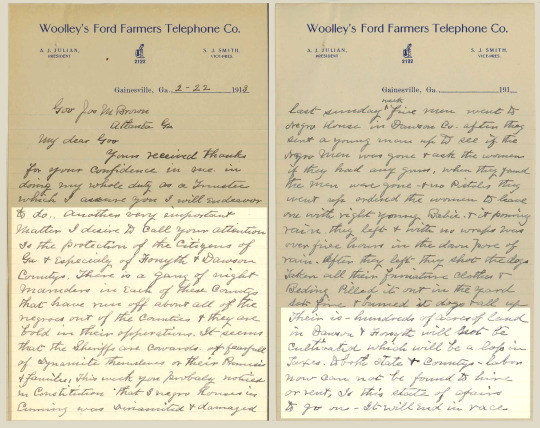
(Courtesy: Kenan Research Center at the Atlanta History Center.)
During that week alone, Julian wrote, “3 negro houses” in Cumming had been damaged by dynamite. The letter did not suggest any anguish for the Black people who’d been terrorized. What concerned Abijah Julian was his fields and who would farm them.
The Julian land stretched hundreds of acres across Forsyth and neighboring Dawson counties. Abijah told the governor that large swathes of land “will not be cultivated” because “labor now can not be found to hire...”
Gov. Joseph Mackey Brown referred to the situation Julian highlighted later in 1913, in a written message to members of the state senate:

After all, the governor continued, “there is no reason why farms should lose their productive power and why the white women of this State should be driven to the cook stoves and wash pots simply because certain people blindly strike down all of one class in retaliation for the nefarious deeds of individuals in that class.”
What happened in Forsyth was not unique. White people across the South had been pushing back against political and economic progress made by Black Americans after the end of slavery and would continue doing so.
In 1906, a white mob stormed downtown Atlanta, killing dozens of Black people and attacking Black businesses and homes. In 1921, a white mob destroyed a Black community in Tulsa, Oklahoma and, according to a government commission report, left nearly “10,000 innocent black citizens” homeless. The death toll was in the hundreds.
Once you begin to look, such violence stretches on and on, decade after decade.
Still hopeful that I might be able to somehow identify and locate living descendants of the people my family enslaved, I flew to Georgia last November.
‘Dick a Man, Lott a Woman’
While I was in Atlanta, I asked my mom and sister if they had time to talk about what I’d found. We sat one evening at the dining room table in my mother’s house, the same table on which we had once shared Thanksgiving dinners with Grandma Horseyfeather.
I had prepared two thick packets of documents that outlined our family tree, each with underlying records, to walk through the lineages of our slave-holding ancestors in three Georgia counties, including Forsyth.
I explained that my search began with a memory of walking with my mother’s father across some land our people used to own in Forsyth; and my grandfather casually remarking of the old well: “The slaves built that.”
“It added up from this one, just sort of little vague memory that I had of Brice gesturing at a well.”

The first question came from my sister, who is married to a Black man. Her voice was stretched thin with emotion. She asked: “Is there any possibility of doing the same for the people that our family enslaved?”
I’d found a man in Grandma Horseyfeather’s lineage who was a slaveholder and likely worked as an overseer in Jefferson County, Georgia. But neither I nor the genealogists we consulted could identify descendants of those he’d enslaved.
“So I’ve – I’ve tried,” I explained. “The issue is that the best details that we have are in Forsyth County, but in Forsyth County they forcibly expelled all of the Black people.”
There were, however, names of enslaved people who were bequeathed in the 1858 will of George Julian, Abijah’s father. At least two seemed to fit with a lineage I could trace.
Listed in the will as “Dick a man” and “Lott a woman,” they looked like a possible match for a couple living three households from Abijah Julian’s uncle in the 1870 census. Their names were listed as Richard Julian and Charlotte Julian. Was Dick short for Richard? And was Lott short for Charlotte?
I noticed that Richard Julian had an “M” in the column for Color. The M stood for Mulatto, someone of mixed race. Charlotte was 32 years old in 1870, an exact match for a 22-year-old enslaved woman listed on the 1860 slave schedule as belonging to George Julian’s widow. Richard was listed as 30 in 1870, which did not line up as neatly with an 18-year-old enslaved man next to Abijah Julian in the 1860 slave schedule.
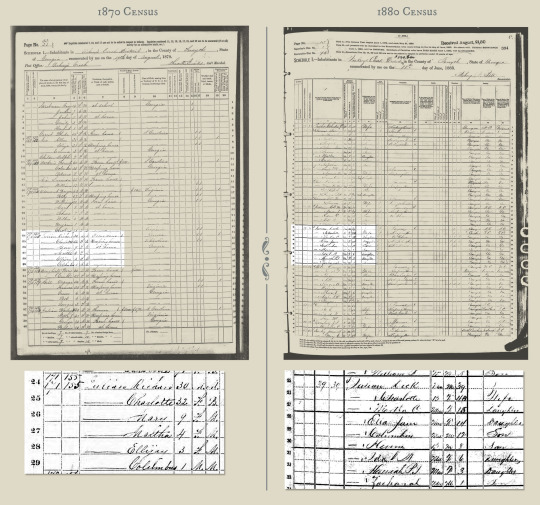
A comparison of the 1870 census and the 1880 census reinforces that Reuters journalist Tom Lasseter is following the same family from one decade to the next. (Source: Ancestry.com)
Still, based on the mention of the names Dick and Lott in George Julian’s will, I followed the Black family’s lineage from one census to the next.
In 1880, Richard was listed as Dick. Lott was there, too, as Charlotte. And their ages were close to what they should have been – about 10 years older than in 1870. The children listed in each census gave me confidence I was following the same family. In 1870, four children were listed. There were three girls and a boy. In 1880, the oldest child was no longer there; she would have been 19 or 20 and may have married. But the boy and the two other girls were there, names and ages matching. The Julians had added four children to the family since the previous census, too, the eldest 8.
My sister’s first question after I traced our family tree that night lingered: “Is there any possibility of doing the same for the people that our family enslaved?”
One of the children in the 1880 census would provide the path.
The Shacks
The day I arrived in Atlanta, November 1, I chatted with my mom about Forsyth and our family’s history there. She’d mentioned something that took me aback.
“When we were talking about the farm, you said there was a slave shack, a slave shed?” I asked her the next day. “What was that?
It turns out my mother had visited the Julian farm when she was a kid. Someone had pointed her to a pair of shacks on the farm and explained that they were where the families of the enslaved used to live.
“It was a structure – by the time we came along it was still on the property but it was, like, a wooden structure that was falling apart.” Her voice became low for a moment. “And that’s what we were told that it was. And I think – I don’t know.” She paused. “I know my grandmother talked about teaching people how to read, or people in her family having taught some of the slaves how to read.”
My mom, a slight woman with a calm voice who works as a nurse with organ transplant patients, was uncertain about the details. “I’m not sure what the – it was just information that she was sharing, maybe to make it feel better that they had slaves. I don’t know.”
I went to dinner with my mom at a Thai restaurant the following evening. I’d been in Forsyth that morning, looking at some documents about the Julian family. She asked me if I learned anything new. I told her about two murders in the family – a pair of sisters slain by the husband of one – that had been covered in the newspapers in the 1880s.
That’s not what she was asking about. My mom looked up from her tofu dish and said, “I am uncomfortable with how little attention was paid to what that was.”
Under her breath, she continued: “The shed.” She meant the slave sheds on the Julian farm.
She said nothing for a few moments. And then she explained, “I was 11.” It was her way of saying she was young at the time. What could she have known about such things? It was the same age as my eldest son.
Why was I putting this at her feet? I thought.
What did she have to do with a white man, dead now for a century, who got rich and enslaved Black people? Where was that money? Not in her pocket. She was working late shifts and driving a beat up Toyota with a side mirror attached to the car by duct tape.
But the feeling of indignation was mine. My mother, a child of the 1960s who took us to downtown Atlanta for parades on Martin Luther King Jr Day, wasn’t being defensive. She was trying to work through what it all meant.
An Unexpected Meeting
Just before Thanksgiving last year, I reached out to a young research assistant at the Atlanta History Center. I’d heard she was tracing descendants of people who fled Forsyth.
Over the phone, I told Sophia Dodd that I was looking for people with the last name Julian. She said she had someone in mind. But first, Dodd would need to check with the person; we arranged to meet in Atlanta later in the month. There was a possibility the person would join us, she said, “but I also know they’re in the midst of traveling so that’s a little up in the air right now.”

I met Dodd at her office a few days before Thanksgiving, ready to ask her questions about Forsyth County.
And then another woman walked into the Atlanta History Center: Elon Osby. She wore a cranberry-colored top and glasses with red cat-eye frames. The 72-year-old Black woman with gray hair shook my hand and said, yes, she would gladly take me up on a cup of coffee.
I hadn’t expected her. I’d not even known her name – Dodd had protected her privacy while Osby decided whether to meet me. But there Osby was, looking at me expectantly. The three of us headed to Dodd’s office.
Without my census forms in hand, I felt exposed. Those family history packets – the ones I shared with my mother and sister – were a way to guide the conversation. And this conversation was with a stranger whose history with my family may have involved slavery. I told Osby that I regretted not having materials to give her.
Osby looked me over. She got to the point. “Is it that you feel that your ancestors were slaveowners of mine?” she asked.
Because I hadn’t done a family tree for her, I explained, I couldn’t be certain. During months of examining the lineages of American politicians, we had held to a firm standard: a slave-owning ancestor needed to be a direct, lineal ancestor – a grandfather or grandmother preceded by a long series of greats, as in great-great-great-grandfather.
As I built my own family lineage, I knew that the Julians were slaveholders. But when I worked with the genealogists on our team to trace the enslaved people named in George Julian’s will, they urged caution. What wasn’t entirely clear: Exactly who had enslaved Richard and Charlotte? Was it George, or was it George’s brother, Bailey?
I offered Osby the abridged version. If she were a direct descendant of Richard and Charlotte Julian, “they were enslaved either by my direct ancestor, George H. Julian” – Abijah’s father – “or his brother.”
As I finished my sentence, I realized the distinction may have been important to the journalist in me. But in this context, it was meaningless. What mattered wasn’t in question: Someone in my family had enslaved hers.
Osby turned to Dodd, the young white woman who’d been helping her research her family.
“First of all, let me ask this.” Osby said. “Do any of these names that he mentioned ring a bell with what you’ve done?”
Dodd answered quickly. “Yes, so I think that it’s definitely very possible that Charlotte and Richard were enslaved by George,” she said.
I asked Dodd if she had an account with Ancestry.com and whether she could print some documents. Together, we navigated to the 1858 will for George H. Julian and the 1870 census forms that showed Richard and Charlotte Julian.
Osby had explained that her grandmother’s name was Ida Julian. And Ida Julian’s parents were Richard and Charlotte Julian of Forsyth County.
Ida. Daughter of Richard and Charlotte. I would see it later. Not in the 1870 census, because Ida hadn’t yet been born. But there she was, listed in the 1880 census. Ida Julian, age 6. Ida Julian, listed in the 1880 census as a young child. (Source: Ancestry.com)
I later found a marriage certificate showing that Ida Julian married a man named WM Bagley in 1889. She was young, perhaps 15. By 1910, the census showed them living in Forsyth County, the parents of three girls and a boy.
The youngest of their children, not yet a year old, was a girl recorded as Willie M. She would go by Willie Mae Bagley, get married, and become Willie Mae Butts – the mother of Elon Butts Osby. The former Ida Julian, now Ida Bagley, in the 1910 census. Her daughter, listed as Willie M., would become Elon Osby’s mother. (Source: Ancestry.com)
After we had worked through the small pile of papers that Dodd had printed, I asked Osby what it meant to see some of those documents.
“It makes people real now. It just makes all of this more real. And it has started a journey for me,” she said, adding that there’s “no telling where it’s going to go.”
I asked her what her family said about Forsyth County when they discussed it with her as a girl. “They didn’t. They didn’t talk about it,” she said.
It wasn’t until around 1980, when Osby was about 30 years old, that she heard her mother tell a reporter the story of her ancestors fleeing the county by wagon because white people were attacking Black families.
“There wasn’t any conversation about it,” Osby said. “But she did talk about her grandfather had this long hair, straight hair, and they would comb it.” That was Richard Julian, Osby’s great-grandfather, the man listed as a “Mulatto” on the 1870 census.
She paused and stared at my face for a moment.
‘I Don’t Think You Can Get Justice’
When Elon Osby’s grandmother, Ida Bagley, and her family fled Forsyth, they left behind at least 60 acres of land, she said.
They made their way to Atlanta after 1912, the year of the carnage. There, in 1929, her grandfather, William Bagley, bought six lots of land in a settlement of formerly enslaved people known as Macedonia Park, according to the local historical society.
It was located in Buckhead, long among the most expensive neighborhoods in Atlanta. The Black residents of Macedonia Park worked as maids and chauffeurs for white families in the area, as golf caddies and gardeners.
Osby’s grandfather made money as a cobbler and local merchant. Her parents opened a store and a rib shack. Her father was also a butler for a wealthy white family, her mother a cook. The area became known as Bagley Park, and her grandfather, according to a historical marker now at the site, was considered the settlement’s unofficial mayor. William Bagley, Elon Osby’s grandfather, was known as the mayor of Bagley Park, a Black enclave in Atlanta that was later razed by the county.

(Courtesy: Elon Osby)
In the late 1930s and early 1940s, nearby white residents – members of a women’s social group – petitioned the county to condemn and raze Bagley Park, ostensibly for sanitary reasons. It had no running water or sewer system. The county, which had not provided those services, agreed, forcing the families to leave. They were compensated for the land, but it’s not clear how much, and in the process they lost real estate in what is a particularly affluent quarter of the city.
Osby’s family had again been pushed off its land. The settlement was demolished and replaced by a park, later named for a local little league umpire. Last November, the city of Atlanta restored the area’s name: Bagley Park.
In thinking about Osby’s family and my family, I found it was impossible not to compare them – and the role slavery played in our respective paths. In 1860, Osby’s ancestors were enslaved and working the fields of Forsyth County. In 1860, my ancestor Adaline Julian, widow of George and mother of Abijah, reported a combined estate value of $19,020. She was among the wealthiest 10% percent of all American households on the census that year. And that wealth didn’t include her son’s holdings. Then just a teenager, Abijah had a personal estate of $4,828, according to census records. That amount lay largely in the value of the enslaved people bequeathed to him by his father.
In 1870, Osby’s ancestor, Richard Julian – free for only about five years – was listed on the census as a farmhand, with no real estate or personal estate to report.
In 1870, Abijah Julian – despite having “lost” those he had enslaved – still had a combined estate of $4,655. That put him in the top 15% of all households in America, census records show.
Osby said her parents used the money they got from the government after being forced out of Bagley Park to buy land in a different part of Atlanta. They continued to work hard. Her father was hired as an electrician by Lockheed, and her mother ran a daycare business.
Osby spent a career working in administration. She said she started as secretary for the manager of the city’s main Tiffany & Co location in 1969, then worked in various city government offices, and now for the Atlanta Housing Authority.
After she’d finished telling me about her family and herself, I asked Osby whether she would mind me recording some video with my cell phone. I asked once again about her family’s reluctance to discuss Forsyth. She repeated that Black parents had long kept such things quiet. I noticed she added the words “rape” and “lynchings.”
But, she said, she has seen considerable progress during her life. Osby, whose family was forced out of Forsyth in 1912, was the keynote speaker in 2021 at a dedication event in downtown Cumming, where a plaque memorializing the bloodshed in Forsyth had been installed. And Osby, whose family was forced with others to leave their neighborhood in Fulton County, is now a member of the Fulton County Reparations Task Force. The group advises the county board and has sponsored research on what happened at Bagley Park, including a report documenting what Osby already knew: that “property owners in Bagley Park were forced to liquidate their real estate, a vital link in the chain of generating generational wealth.”

“There was a time when I didn’t feel that restitution or reparations was necessary” for the land taken from Black families after 1912 in Forsyth, and then what followed in Bagley Park, Osby said.

“I just want somebody to acknowledge it and say, you know, we’re sorry. But I have come to realize, or come to feel, that we do need to receive something in the form of restitution. I think that the main thing is, if you touch people in their purses they’ll think before they let something like that happen again. I think it’s mainly about [how] we can never let this happen.”
As for her enslaved ancestors, Osby had a different outlook on reparations. “I don’t want to think of slaves as property. And if I have to give you a value for a slave person so that you can, you know, give me reparations for that – then that’s making them property. That’s reinforcing that idea that they were a piece of property for somebody to own.”
I asked her what it meant to know that history – to know more about what happened during slavery in such personal terms. To know that my own ancestors enslaved people. Osby puckered her bottom lip, paused for a moment and sighed.
She pointed her left index finger at me and said it was a question for me to answer. How did I feel, she asked, when I found out my ancestors enslaved people?
‘What Does It Mean to Know This?’
I told her the story of the old well and my grandfather. I told her about the reporting project, about finding out that my family enslaved people not only in Forsyth, but at least two other counties as well.
Finally, I stopped talking. In my mind, I had run through the right things to say. In a blur, I wondered: Should I apologize to Osby, to her family on behalf of mine?
Instead, I decided to talk about what made me most comfortable: the journalism itself. “A lot of it has been just establishing, sort of, the facts – figuring out, this is who they were, this is what happened,” I said. “I guess sitting here right now I don’t have an answer for – I don’t have an answer for my question” on the value of discovering more about slavery.
She leaned back and laughed.
At some point, I lowered the camera from chin height to the table. My hands were trembling. I was based in Iraq for three years. I sat with militants in Afghanistan. I know what mortar and machine gun fire sound like, at very close range. But at this little table, before this woman, I felt nervous.
I kept talking. I talked about how we – meaning white people – choose to know but not know. I told her about my mom remembering the decrepit former slave sheds on the Julian farm.
Osby no longer was smiling.
She began to talk about something that circled back to her comments about her great-grandfather’s straight hair, her curiosity about possible Cherokee Indian heritage. And, also, to rape.
“Black people, we’ve always known either through the movies or if you’ve learned it, you know, from your family, about the interracial relationships that happened on these plantations or whatever,” she said. “My grandmother – very, very fair skinned. I have one picture of her where she, you know, looks like she’s white. And so, you know that somebody else was there. You know?”
Somebody else was there. It was a phrase with a passive structure common to the South, a way of not assigning blame to the person sitting across the small table from you in the corner of an office. The meaning nonetheless seemed clear to me: Did my ancestor rape her ancestor?
“I’m curious, and that’s one reason why I was excited about coming to speak with you because I want to find out about the Cherokee part,” she said. “And also, if there was a white person, you know, that was, her – whatever,” she said, cutting the sentence short and fluttering her hands in the air.
I told her that I’d done a DNA test online. She said she was considering taking one as well.
After we spoke, Osby asked me to go with her to the graveyard at Bagley Park. I followed her Mazda. Its license plate read MS ELON. Her grandparents were buried there, she said, but she couldn’t say where. The gravestones had been vandalized over the years, Osby explained, looking at the broken markers.
Panic and Questions
After we parted, I drove to Forsyth County and the Julian farm. I could see across the road to the spot where my mother described the slave shacks having once stood.
The door was locked, the farmhouse empty. I stood outside the white clapboard home and stared. The leaves crunched underfoot, down at the end of Julian Farm Road. I rested my forearms on a dark slat fence and scanned the property, a utility shed to the right and a patio to the left.
I did not see the well.
I walked to the front of the house and looked for it. The well wasn’t there. I went to the back edge of the land, which now sits on the shore of a man-made lake that flooded part of what was once Abijah Julian’s farm. Nothing. The waters of Lake Sidney Lanier near what was once a farm owned by Abijah Julian. The lake, created in the 1950s, flooded parts of that farm. REUTERS/Tom Lasseter
I felt panicky. The well, the totem of my memory and the genesis of this project – “The slaves built that” – was nowhere. Was it possible I had mixed up some other memory, that it was never at the Julian farm?
I walked over to a step behind the house and sat down. My thoughts about the well gave way to replaying parts of my meeting with Elon.
Should I have apologized to her? “I am sorry,” I could’ve said. “I am sorry that my ancestors brutalized your ancestors.” What had stopped me?
The next day, I sent a text message to the man who now owns the Julian property. Did he know anything about an old well? “Yeah, there was a well next to the house that was dried up. We covered it,” he replied. He sent me a photograph of the front of the house from a 2019 real estate listing. And there it was – the well I remembered, at the far right of the picture.
I peered at the photo. I read the listing. The lake that flooded part of the farmland had created 209 feet of waterfront that now featured four boat slips, according to the advertisement for the property. It noted the farmhouse was “originally built in the late 1800’s by the family of State Senator Abijah John Julian” and added another dash of history: the Julian family was “of the Webster line circa 1590 England.” There wasn’t a word about the other side of the Julian family history: slavery.
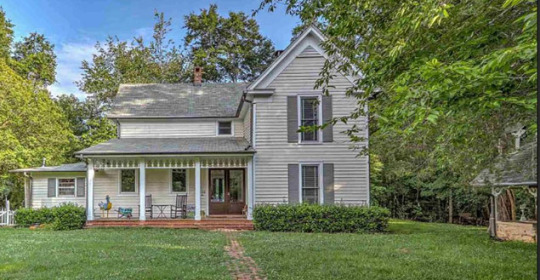
Instead, under the section for what the seller loved about the home, was this line: “Your own private plantation.”
What Should Be Handed Down?
In the months after my visit to Forsyth, I’ve looked at a video of the church service that I attended last summer on Juneteenth, the national holiday marking the end of slavery. At the time, I had bristled at the pastor’s remarks, which centered on the need for white people to face our history, to atone.
Toward the beginning of the service, the children had been sent to Sunday school. So my sons weren’t sitting next to me when the pastor said, “We’re asked to stay home and to reflect with those who we know and whom we love – we’re asked to … have the difficult conversations about race and status and prestige and wealth.”
There was another detail that I hadn’t associated with that day’s sermon. It wasn’t only Juneteenth; it also was Father’s Day. From a 2019 real estate listing. The well is seen at the far right in this photo of the front of Abijah Julian’s house.
I’ve thought more than once about all that I had missed. About what to tell my children about everything I’ve learned in the past year. About our family’s part in slavery and the descendants of those we enslaved. About my conversation with Elon Osby.
What should be handed down, and what should not?
Getting ready for a reporting trip last year, I was sifting through online documents from an archive in south Georgia.
I came across a photograph from 1930 of white men sitting in front of an American Legion post. They each wore a medal on the left lapels of their suit jackets. I zoomed in and saw what had caught my eye. It was the cross of military service, handed out by the United Daughters of the Confederacy to World War I veterans who were direct descendants of Confederate soldiers.

In a little white box on a shelf in my home office, I have that same cross. It had been given to my great-grandfather, from Brooks County. After my great-grandmother Horseyfeather died, my family gave it to me, the ever-faithful son.
I fished the cross from its box and turned the thing around in my fingers. The cross was decorated with an X formed by two stripes of stars immediately recognizable from the Confederate battle flag. Around the edge, in the background, are a Latin phrase and two dates: Fortes Creantur Fortibus 1861-1865. The years are those of the Civil War. I Googled the phrase. It means the strong are born from the strong.
I’d had that cross for about 25 years and always associated it with my great-grandfather’s service in World War I, its dates marked in the foreground. I had never stopped to look more closely.
Peering down at it now, I realize it also meant something more: a loyalty to the South when it was a land of slavery and secession.
I was holding on to a relic of the Lost Cause, a history of savagery cloaked in nostalgia. I was holding on to something that I needed to explain to my sons, and then to let go. As I type these words, I have yet to have that conversation. The medal remains on my shelf.
Apology and Absolution
I met with Elon Osby once more earlier this month. We walked again through the cemetery at Bagley Park, where somewhere her ancestors are buried, their gravestones long gone. We stopped at a picnic table. I asked her about the last time we met, reading some of our quotes out loud and talking through what each of us had meant.
There was rain coming, with dark clouds, then lightning. I told her that I’d been nervous during our initial conversation. She asked whether I thought the guilt had been passed down: “Most white people do not have ancestors that owned slaves,” she said. I pointed out that I have at least five.
I said that I’d wondered if I should have apologized. “No,” she said, “I don’t transfer the guilt. Or not the guilt, but the responsibility of it. I don’t do that.” I said with a nervous laugh that I wasn’t asking her to absolve me.
The lightning drew closer. It was time to leave. “We’ve probably covered everything,” Osby said, gesturing to get up.
But I wanted to say more. Ignoring the rain, I reached for the words I hadn’t found during our first meeting: “I’m very sorry that it happened. You know, that all of that happened. And I feel that every time I look through those wills and the language that they used. And that 1858 will – listing furniture and livestock and then human beings. You know, I can’t help but be sorry.”
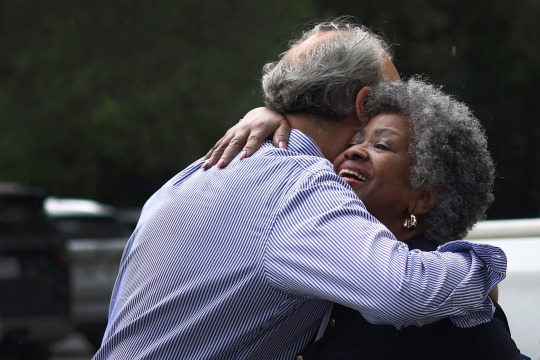
Osby stopped and looked at me. Listening to the recording later, I could hear the wind and the rain in the background. And then her voice. “It doesn’t feel good at all when you see the horses and cows and slaves. You know, it doesn’t feel good at all,” she said. “But at the same time, it happened. It happened to my people. I don’t want to forget about it.”
She pointed at the packet of genealogical material I’d brought along, mapping our families and that terrible history long ago in Georgia. “This is good enough. What you’re doing for me and my family, bringing this information to me.”
She let a moment pass, and then said: “You’re absolved.” She threw her head back and let the laughter roll like thunder. As the rain fell, we walked to the parking lot together. We paused, then hugged before parting.
“The Slaves Built That”’
By Tom Lasseter
#georgia#slavery#slave records#reuters reporter explores his slave owning roots#“The Slaves Built That”#white supremacy#Blacks Enslaved in America#forsyth county#lynching#stolen land#stolen heritage#ancestral dna
5 notes
·
View notes
Text
taash said "they were doing it" and people ran with the interpretation of an npc that doesn't know solas or the history of the elvhenan even when bellara interjected and said, no, that's not right. that's not how it was for the elvhenan. they formed bonds before they had physical bodies. and people ran to doompost or create weird anti-solavellan shit even though mythal & solas refer to each other as old friends and when she releases him there is no tenderness or love in it. it is the act of unchaining a dog from his post, the stepping down of a general. but to each their own ig.
#let the record show i think love was there. do I personally perceive it as romantic / sexual? no.#mythal's perception of love & care is warped in and of itself#i think they loved each other. but she loved what she could take from him and what he could give in terms of service#not because she was romantically into him#also i wish we knew more about her & elgar'nan. her regret prison form says she holds no love for him anymore#and it makes me wonder when that love soured. was it when she was blighted? before that? was that love also born of duty and companionship?#this is the last post i'm gonna make ab this i think#bc i believe people are too caught up in the modern western ideas of love as thing we give solely to our romantic partners#and we literally have a character go ”our perception is warped bc of the age we live in” and some of you are still being purposefully obtuse#and i think trick saying it's up to interpretation is basically admitting EA had them dumb down the game anyway#if everything ab the rise and fall of the evanuris in game#was condensed to five 2min cutscenes it says enough that whatever the writers wanted#was swiftly cut down by corporate dept. basically saying it's in the fans' court now#also bc it's an easy cop out around new players & non solasmancers who are indifferent ab him / dislike him#as a way to appeal thru a more sympathetic lense of look!! he loved and was led astray#not to mention the clear justinia / leliana parallels#and leliana gets angry if you imply she was romantically involved / in love w justinia#and the romance descr when you remake your inq saying the dread wolf could not predict what it would mean to fall IN LOVE#implying he had never fallen in love before or at the very least experienced a romantic love#also him saying drinking from the well would make you a slave and he gets really upset#yet ive seen takes of ”hes doing this for her cus he dgaf ab lavellan” ?? he got mythal killed when he told her ab the blight#whatever feelings of admiration he had for her have rotted. he is literally burdened by his mistakes and his choice in joining her#i feel like if i were a spirit bound and twisted into a weapon i would need my creator to tell me i am Free. i would need that closure#like when cole says its not abuse to bind him if he asks and solas said thats not always true???#if you perceive her interaction w him in vg third act as#anything more than the way justinia released leliana in inq then im sorry maybe youre just obtuse#solavellan#mythal#dragon age meta
208 notes
·
View notes
Text
me when im like "is my interpretation of unalaq too Out There. am i unhinged" and then i watch the rest of lok s2 and theres eska abusing bolin and bolin assaulting ginger and mako degrading korra and korra throwing mako's desk across the room and lin talking about wrecking tenzin's island when he broke up with her and whatever the fuck is going on with how varrick treats zhu li and im like Wait. this is entirely on brand with the background of this season actually
#unalaq being a creep? join the club thats the theme of this season apparently#unalaq assaults vaatu? yeah just throw that in the pile with eska dragging bolin around like her slave and lin attacking tenzin#for the record im not comparing unalaq to Teenagers im saying that the writers did this a lot this season#lok s2: Domestic Abuse Boogaloo#unalaq#lok s2#legend of korra#legend of korra season 2#vaatu#technically#bolin#eska#korra#mako
24 notes
·
View notes
Text
I am really excited to see ezran finally let out some of his suppressed anger and actually hold people accountable for their actions like he deserves but...
I'm so fucking terrified of him letting this anger out in a unhealthy way, in a way that could potentially make him succumb to the cycle hate, rage, and violence that he has been so desperate stop for the past two years. And affect his relationship with those who love and trust him. Please don't let this happen, writers. Don't be that stupid, writers
#for the record#i don't necessarily think this will happen#but the thought is scary all the same#ez is so good at breaking generational cycle#i need him not to become a slave to one#but even less do i want ez to continue acting like nothing is wrong#and that he holds no anger#the dragon prince#tdp#tdp ezran#king ezran of katolis#let ezran be messy#king ezran#tdp s7 speculation#tdp s7 spoilers#tdp s7#tdp s7 theories#tdp s7 trailer#tdp season 7#the dragon prince spoilers#tdp season 7 spoilers
22 notes
·
View notes
Text



March sketch dump 🧙♂️✨
#the dragon prince#aaravos#my art#callum#tdp#doodle#callum: when you're a simp for your master but you're also so pretty that you can literally start wars.#I got sick again#so besides slaving away on my thesis#all I had were more brainrot doodles#all of these are glued from different brainrots#I don't think I have the energy for fully rendered illustrations any time soon#but I'll do my best!#I want to post more w/out worrying about the notes#i know i sound like a broken record#but it's pretty discouraging seeing my notes on tumblr lately#hopefully these shows that I love them both very much despite not posting as often 💗#I'm on the last stretch of my thesis so all of my rendering effort is going to that instead.#hopefully I will finish soon in around june#that's all for now!#rambling in tags feels nice.#I hope everyone is well!#thank you for reading
68 notes
·
View notes
Text
GUYS LOOK
LOOK


The Slave in the Magic Mirror is seen after Magnifico is sucked into his own staff
#disneynerdpumpkin#disney#wish disney#disney wish#wish 2023#king magnifico#the slave in the magic mirror#the magic mirror#magic mirror#snow white#snow white 1937#disney snow white#snow white disney#wish magnifico#also for the record: this is a REFERENCE#NOT an attempt to make King Magnifico the Magic Mirror#it's just a reference paying homage to Snow White#snow white and the seven dwarfs#like Magnifico doesn't even have the same personality as the slave in the magic mirror#so how would they be the same character
116 notes
·
View notes
Text



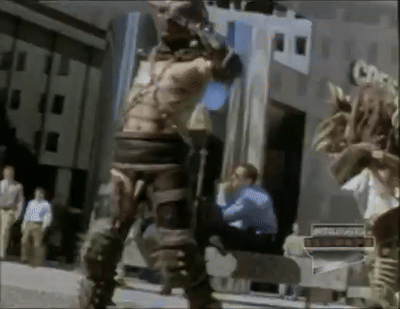
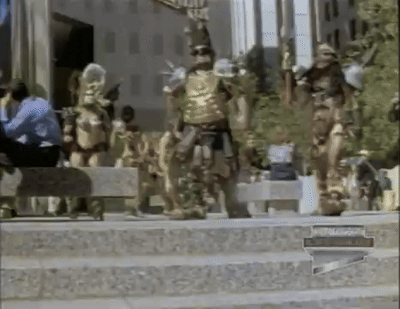

in the name of GWAR, in the name of love in the name of the blood dripping out of the sun
GWAR - meat sandwich [1/3]
#yes im posting multiple gifsets for this mv#i like it :)#gwar#oderus urungus#balsac the jaws of death#jizmak da gusha#flattus maximus#beefcake the mighty#sexecutioner#slymentra hymen#i think thats everyone :) im not tagging the slaves LMAO#slave pit inc#metal blade records#90s punk#90s metal#meat sandwich gifset#pickle's gifs#pickle's posts
42 notes
·
View notes
Text

I will make you beg for it more than never , let play loser I’m here to control you
#bd/sm dom#bd/sm domme#bd/sm kink#bd/sm slave#dom mommy#cash domme#dominated slave#dominated love slave#humilated slave#domminatrix#banking surcharges hit record high despite junk fee clampdown – steps to check if you’re being unnecessarily charged#fantasy dildos#dildos for women#dildoadult#dildosucking#dildovibrator#sex shop with the ‘uk’s largest selection of dildos’ is smashed for fifth time
73 notes
·
View notes
Text
boba's showed up incidentally in a few books i read today and i love that he universally seems to be like "why do you people Feel Things and Have Causes? that's stupid. i don't need anything but more credits and a steadily-growing already-improbably-large weapon stash". and then everyone who meets him is either terrified of him or tries to kill him. absolute king shit.
#boba fett#love that his one and only attachment to anything in the galaxy seems to be slave i#sending u to therapy boyo i think we can get a scientifically recorded instance of spontaneous combustion
8 notes
·
View notes
Text
I think I realised I was the problem when I would let him record us doing the most ungodly things but heaven forbid my stuffed animal collection witness anything of the sort 😇🎀
Like what? 😇 I’m perfectly okay being your personal pornstar; but my stuffed animals will not become victims to your depravity - sorry not sorry 💋
#hot and bothered#bd/sm community#bd/sm relationship#bd/sm brat#bd/sm pet#bd/sm kink#so wet right now#bd/sm blog#bd/sm dynamic#so wet#bd/sm rope#bd/sm couple#bd/sm slave#bd/sm dom#bd/sm rules#bd/sm daddy#bd/sm collar#bd/sm cnc#bd/sm concept#bd/sm kitten#bd/sm little#bd/sm breeding#bd/sm puppy#voyerurism#exhibition kink#public exhibition#public#video#record
10 notes
·
View notes
Text
I’m totally playing Devil’s Advocate for Gaz here but every time you think she’s being an absolute demon to her brother and it’s uncalled for, recall the full extent of Dib’s most insufferable and jerkass behaviors, and imagine being under the same roof as that guy every day. Sharing a fridge and pantry with that. Sharing a common living space with that after you’ve already spent a school day with it. You’re like, 11 and just want to play video games and do normal childhood stuff, and you live with Dib Motherfucking Membrane.
Yeah yeah, he got what he deserved for the Pork Taster thing, but I’m pissed off on sis’s behalf just watching how often the dude straight up shows negative amounts of consideration when it comes to someone else’s food. What the hell.
Use me as a guinea pig for dark magical arts and curses? Well, nobody’s perfect bro. We all make mistakes.
Drink the last soda unnotified like that? Fucking yoink my pizza slice out of my own hand??? You are catching some freaking hands you audacious little twerp.
#invader zim#iz#dib membrane#gaz membrane#dib and gaz#dib slander#lol#tongue in cheek#I Love dib as much as the next fan but i would rather die than be stuck in an elevator with him were he real#scarlet talks about things#HE IS SO OLD ENOUGH TO KNOW BETTER AND YET HE WON’T LEARN#let’s also not forget about how badly he held her up in game slave 2#I KNOW he could have recorded that MM episode for later#sorry I’m still just baffled by the pizza theft
56 notes
·
View notes
Text
Remembering History
If you ever see someone talking about how we can't remove the statues to Confederate generals because we'd be erasing history, remember this:
We don't put up statues to remember history, we put them up to honor people. They won't be history until long after we're all gone.
We shouldn't be honoring racists for their racism.
#yes this is a generalization because on a science of history basis statues form a part of the living historical record#but I'm talking about the way people use the term to defend statues that honor dead slave owning racists#statues that only exist because a bunch of very racist people wanted to terrify every black person in the United States#because they couldn't cope with being great big losers who only proved how weak slavery and authoritarianism actually were#fuck the confederacy
16 notes
·
View notes
Text


#slave play#jeremy o. harris#black playwright#contemporary play#theatre#theater#plays#tumblr polls#once again#mirrors on stage.#apparently this show broke the record for most tony nominations for a play with 13#breaking the record set by angels in america#but stereophonic broke it this year with 14 nominations
12 notes
·
View notes
Text
Sepultura – Dead Embryonic Cells
#Sepultura#Slaves Of Pain#Dead Embryonic Cells#Format:#CD#Unofficial Release#Country:#Italy#Released:#1994#Genre:#Rock#Style:#Thrash#Recorded live in Finland 6 - 07 - 91.#℗ 1994.#Made in Italy.#Brazil
9 notes
·
View notes
Note
Your family lore is crazy
we're also (potentially) descended from a man who made evaporative air condioners and improved toilets for trains
#i say potentially because the man is black and his grandparents probably were slaves#meaning it couldve been the slaveowner's name
33 notes
·
View notes
Text
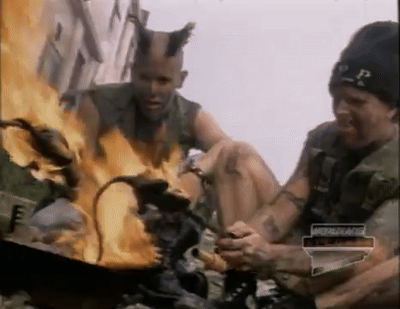





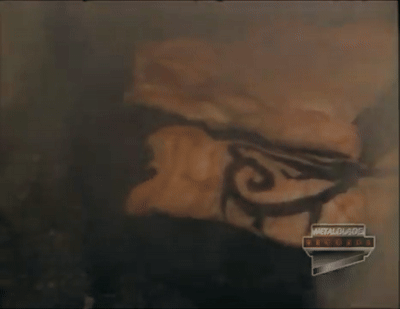


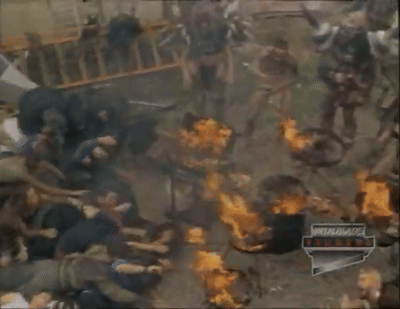
they come for MEAT SANDWICH!
GWAR - meat sandwich [3/3]
#gwar#oderus urungus#balsac the jaws of death#jizmak da gusha#flattus maximus#beefcake the mighty#sexecutioner#slymentra hymen#slave pit inc#metal blade records#90s metal#90s punk#meat sandwich gifset#pickle's gifs#pickle's posts
28 notes
·
View notes